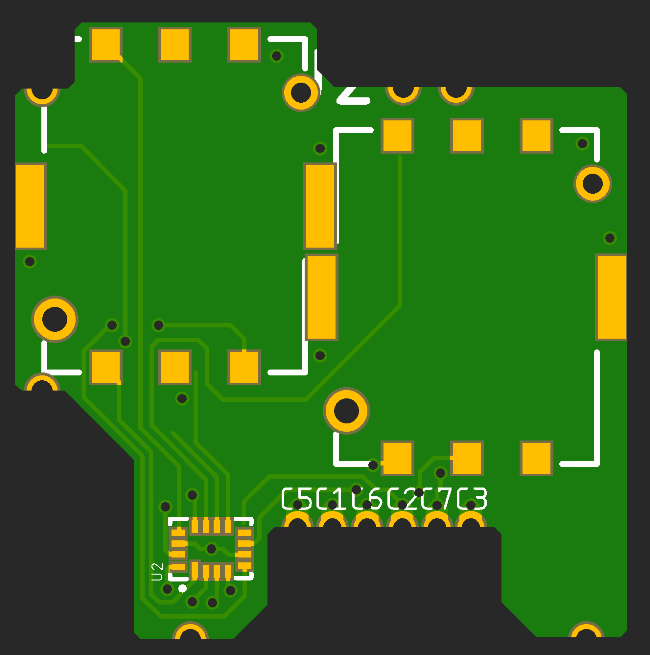I have read this: <LINK_TEXT text=“http://support.seeedstudio.com/knowledg … ated-holes”>What are Plated Half-Holes/Castellated Holes? – Feedback & Ideas for Seeed</LINK_TEXT>
But I am confused if I can have you manufacture odd shapes or if they must be rectangular or at least have parallel castellation.
- A typical 2 sided castellated board (can simply be repeated in the X-> direction)
--------/----------/---------/----------
|------------------------------------------|
| --------- circuit board ---------------|
|------------------------------------------|
--------/----------/---------/----------
- 3 sides - I assume one can be rotated and the two non-castellated sides can be panelized (max of two = 4 sides)
--------/----------/---------/----------
|------------------------------------------|
--------- circuit board ---------------|
|------------------------------------------|
--------/----------/---------/----------
ie sort of like this:
--------/----------/---------/---------- --------/----------/---------/----------
|------------------------------------------| |------------------------------------------|
--------- circuit board ---------------| |--------- draob tiucric----------------<
|------------------------------------------| |------------------------------------------|
--------/----------/---------/---------- --------/----------/---------/----------
- More complex 3 sides - I assume one can be rotated and the two non-castellated sides can be panelized (as per example 2 above)
--------/----------/---------/----------
|------------------------------------------|
------------------------------------------|
--------- circuit board ---------------|
------------------------------------------|
|____------------------------------------|
+++++|-----------------------------------|
+++++|-/----------/---------/--------|
Note: Where +++++ is blank space (as this forum/html removes additional repeated spaces)
- Q1. But can i do something like this more complex 3 sides(with bottom side at two levels)?
and Q2. Can I also panelize this as per 2 and 3?
and Q3. If so, can I do in Fusion or must I use Advanced?
--------/----------/---------/----------
|------------------------------------------|
------------------------------------------|
--------- circuit board ---------------|
------------------------------------------|
|____------------/-–/-—/----------|
+++++|-------|+++++++++++++|------|
+++++|–/--|+++++++++++++|–/--|
Thanks in advance for your reply?
Rod.

 Many Thanks
Many Thanks